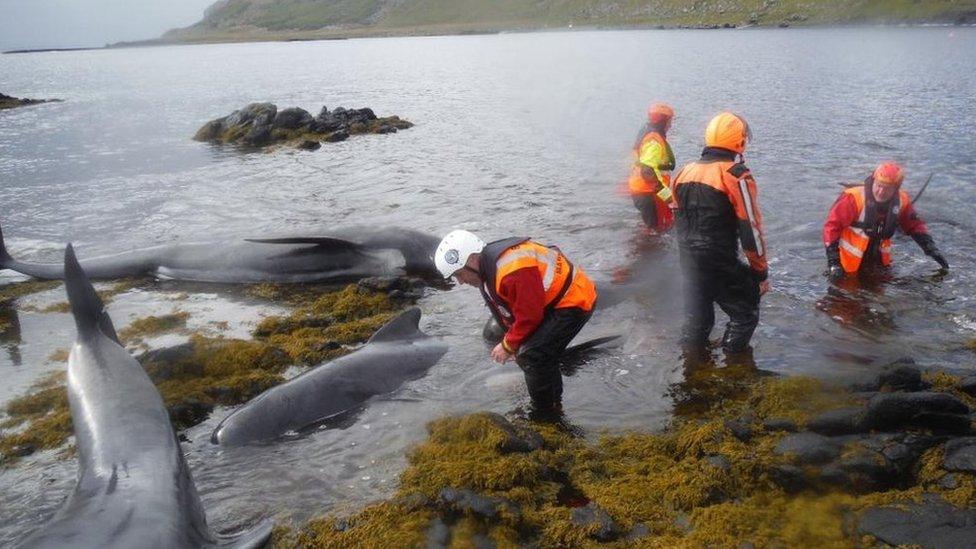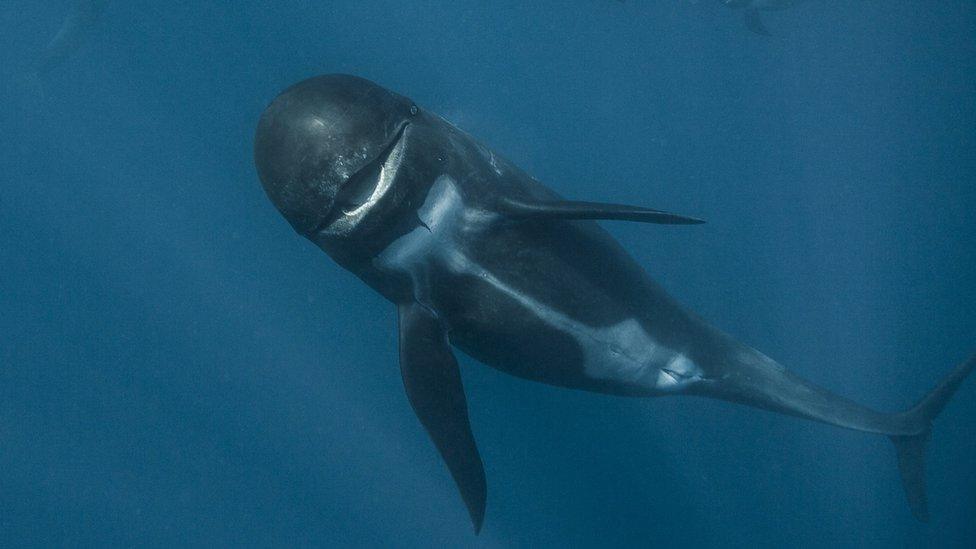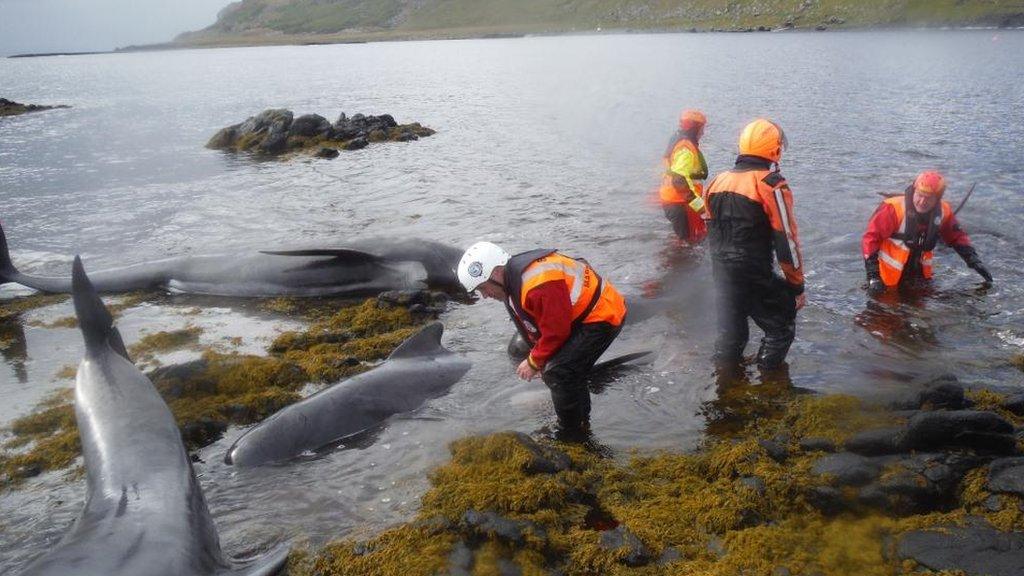Method to detect noise damage to whales studied
- Published

The new research involved whales that became stranded in shallow water on Skye in 2015
Scientists have studied the ears of dead whales to learn how underwater man-made noises affect marine mammals.
Samples taken from long finned pilot whales that died in mass strandings in Fife in 2012 and on Skye in 2015 were examined in the new study.
The team said there was "an urgent need" to develop methods for assessing the impact of high-intensity sonar and other sounds' on whales and dolphins.
They believe the method they used could guide further research.
Staff from the Scottish Marine Animal Strandings Scheme worked with scientist Maria Morell on the study, which has been published in Scientific Reports, external.
The experts examined the inner ears of the dead whales. The organs were removed during post mortem examinations and preserved.

The scientists examined the inner ears of pilot whales
Scanning electron microscopy (SEM) was applied to the inner ears to detect acoustic trauma, damage caused by over-exposure to noises.
In their paper, the scientists said SEM was a useful method for detecting such damage. They have recommended that further research be carried out.
The strandings involved in the study saw large numbers of pilot whales get into difficulty in shallow water.

Efforts were made to try and save the whales stranded on the Fife coast in 2012
Twenty-one whales died on a rocky foreshore between Anstruther and Pittenweem in Fife in September 2012.
The stranding on Skye's Brogaig beach in June 2015 involved 22 whales. Seven of the animals died, or had to be euthanized because they were in distress and could not be saved.
A female and its unborn calf were among those that died.
In both incidents there were efforts by volunteers and coastguard personnel to save the animals.
- Published3 June 2015

- Published2 June 2015

- Published3 September 2012

- Published2 September 2012
